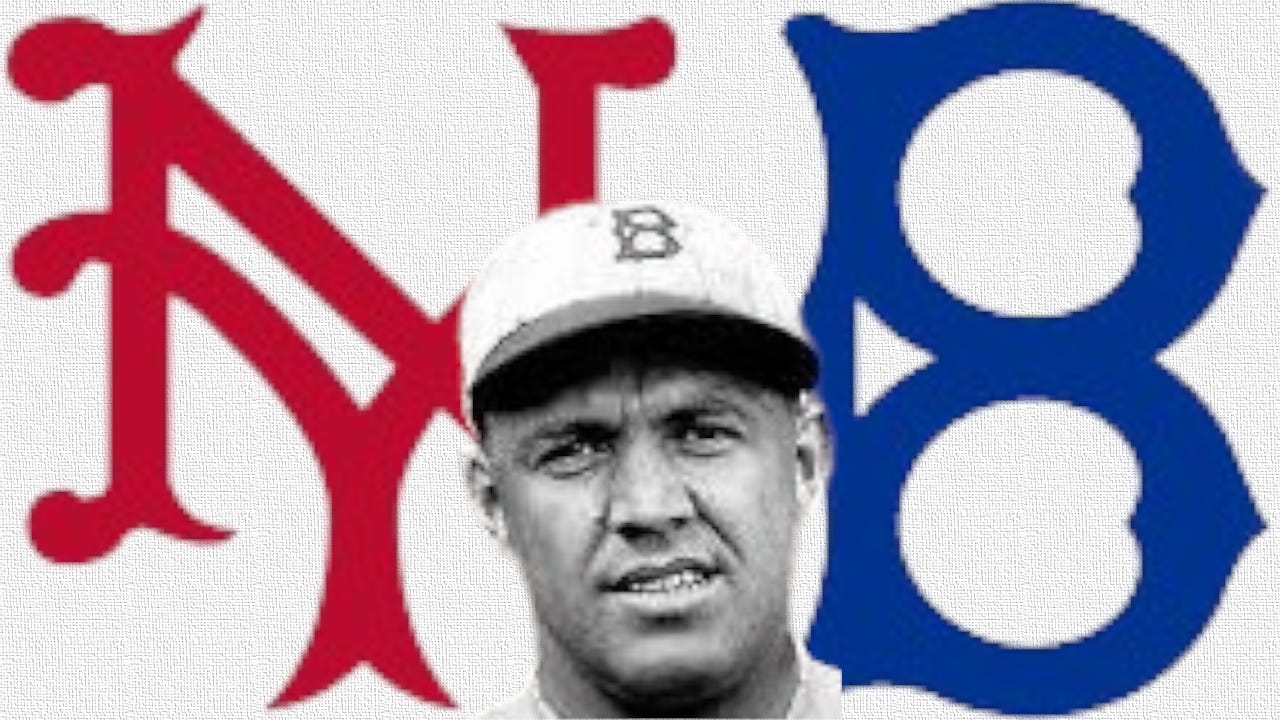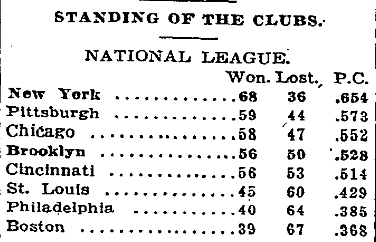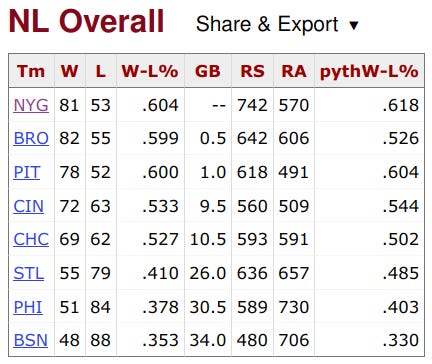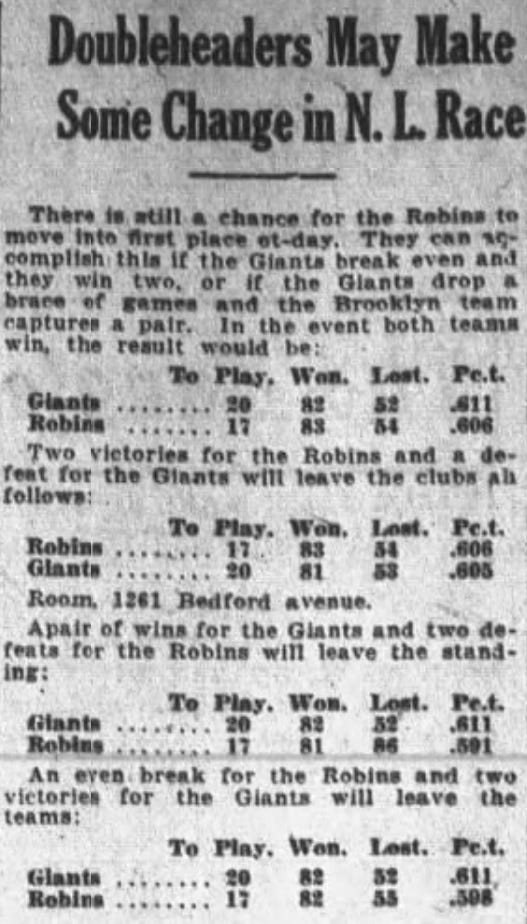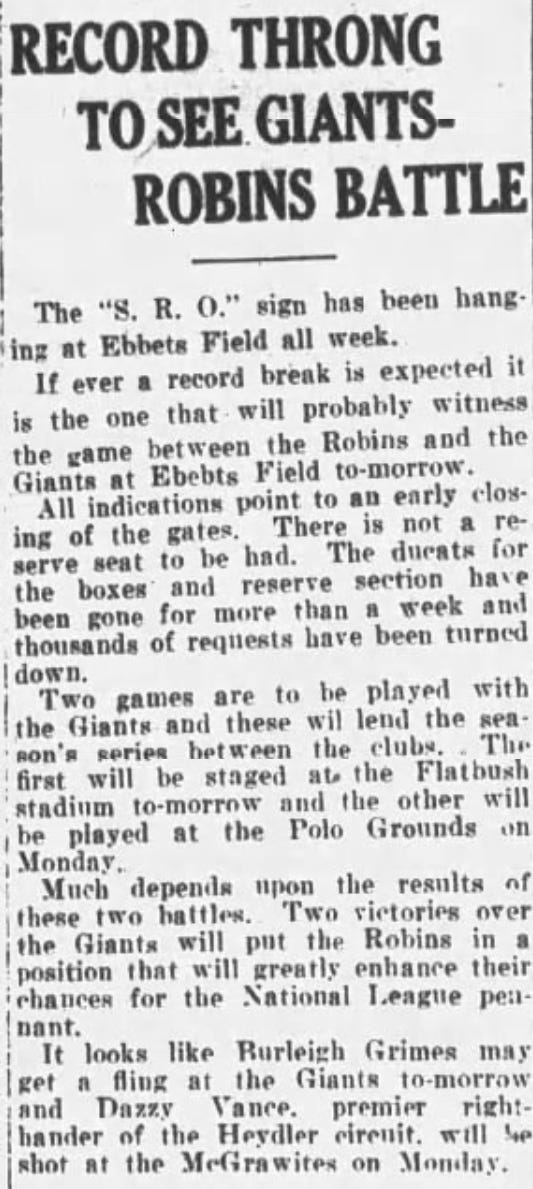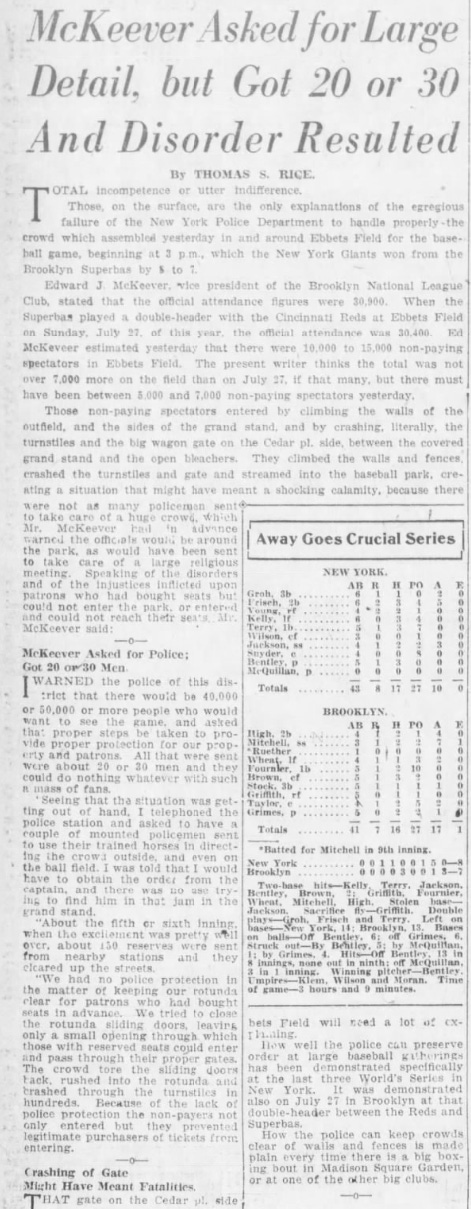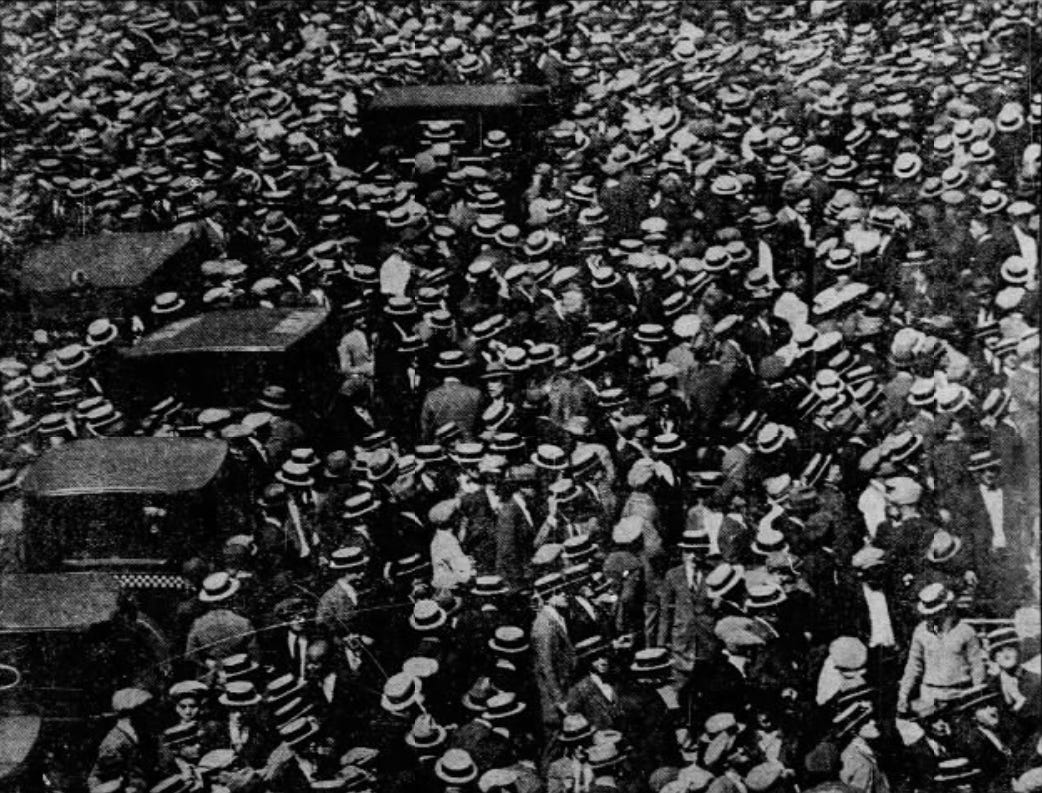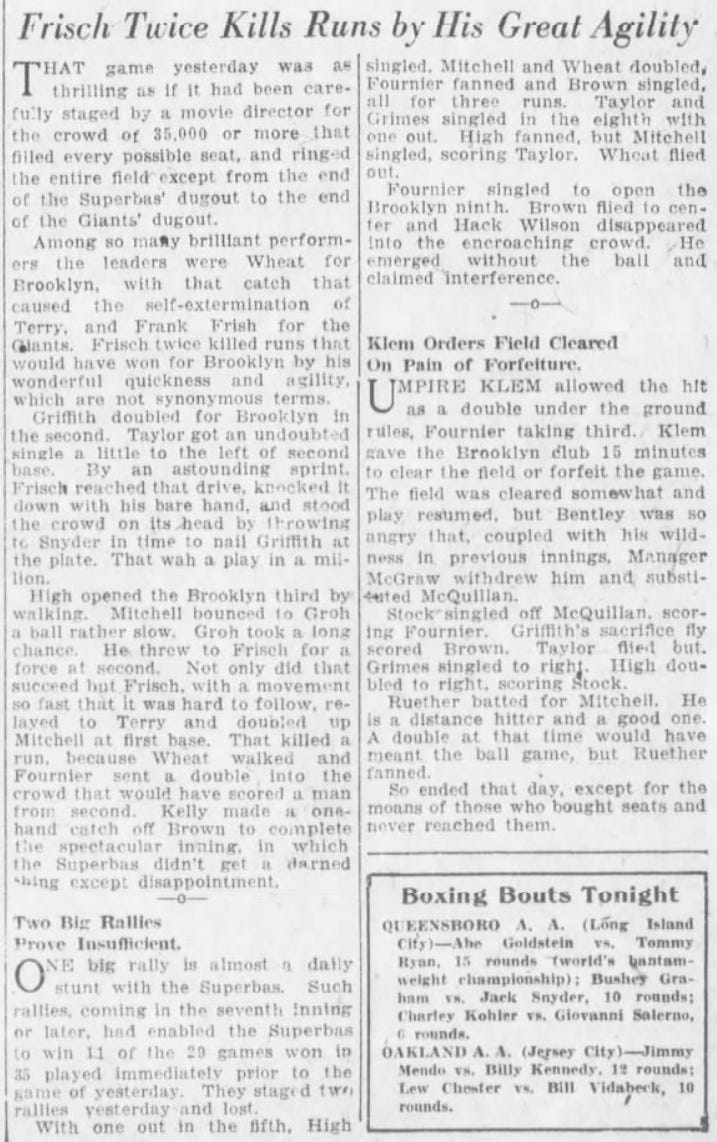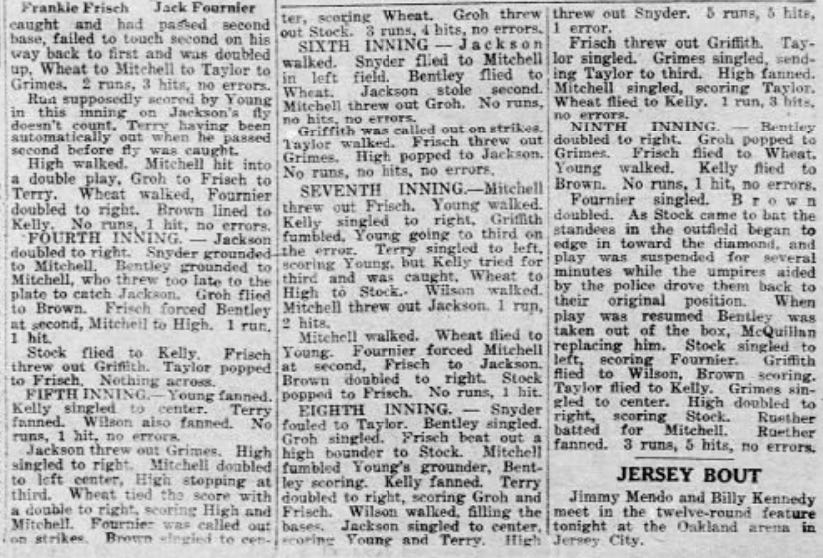The Best Giants - Dodgers Game You've Never Heard Of
I’ll bet you’ve never heard of this one.
The 1924 New York Giants looked sure of winning the pennant. They had a massive lead of about 11 games by early August.
Remember, this is back in the days when conventional wisdom held that the team in first place on July 4 would likely win the pennant. This New York lead looked absolutely insurmountable.
The Brooklyn Robins, meanwhile, would have been happy to finish over .500.
But then the streak started.
Brooklyn miraculously pulled off a 15 game winning streak. The Robins streak finally ended with the second game of the doubleheader on September 6, but the damage had been done.
Suddenly, the standings looked like this:
And articles like this were popping up:
And so you can imagine why people really wanted to attend the Giants - Robins game in Brooklyn on September 7.
What ensued was complete pandemonium.
For one reason or another, the New York City police department decided to not furnish enough police officers to take care of the huge crowd.
Ebbets Field sat right under 31,000 in 1924. A crowd of about 50,000 people showed up. When the gates opened, something like 7,000 people streamed inside without paying. They rushed across the field to standing positions in the outfield.
These old photographs don’t really do justice to the scene, which included a 13 year old boy being seriously injured after trying to scale a wall to enter the park.
There were three things about this game that were truly bizarre.
First — the Giants scored a run in the bottom of the 3rd inning that didn’t count.
Ross Youngs was on second base, and Bill Terry was on first with only one man out. Hack Wilson (yes, that Hack Wilson) came up and lifted a fly to left field.
Zack Wheat, one of the most famous Dodgers before the Boys of Summer, made a spectacular catch on the ball. Some reports claim he caught it with his bare hand. At any rate, he laid out to grab it.
Youngs and Terry had been off with the pitch in that old John McGraw style. Both returned to their respective bases.
Wheat was so out of position that Youngs was able to score from second on the sacrifice fly. Wheat’s throw just barely missed catching him. Remember — this was at Ebbets Field, which was far from the most spacious ballpark in the country at the time.
However, it turned out that Terry had touched second base before returning to the first base bag to tag up. The catcher threw to Burleigh Grimes, who either went to first base himself or threw to the shortstop covering at first base to complete a double play.
The run was nullified, even though Terry was standing on the bag when the Dodgers tagged up.
I’ve got no idea how the ruling of that one worked. You can read about it for yourself:
Second — Brooklyn had runners on second and third with two out in the bottom of the 9th, down by a single run. They put in Dutch Ruether to pinch hit.
Ruether, of course, was a pitcher.
You see this a lot in baseball before World War II. I still don’t understand it.
Ruether struck out, and this incredible game was over.
Third — Brooklyn starting pitcher Burleigh Grimes went the distance.
Grimes gave up a whopping 17 hits and 8 runs in the complete game loss. He struck out 4 and walked 6, throwing an incredible number of pitches.
You don’t see that anymore, that’s for sure.
Anyway, I can’t really do this one justice. However, we can read the old play by play account, courtesy of The Daily News:
Note that the ruling on the 3rd inning double play differs from the account on Baseball Reference. All the papers I read indicate that Grimes touched first base; I’m not sure what Retrosheet’s sources are.
Note also the reference to the crowd almost getting out of control in the bottom of the 9th. This was a wild one.




